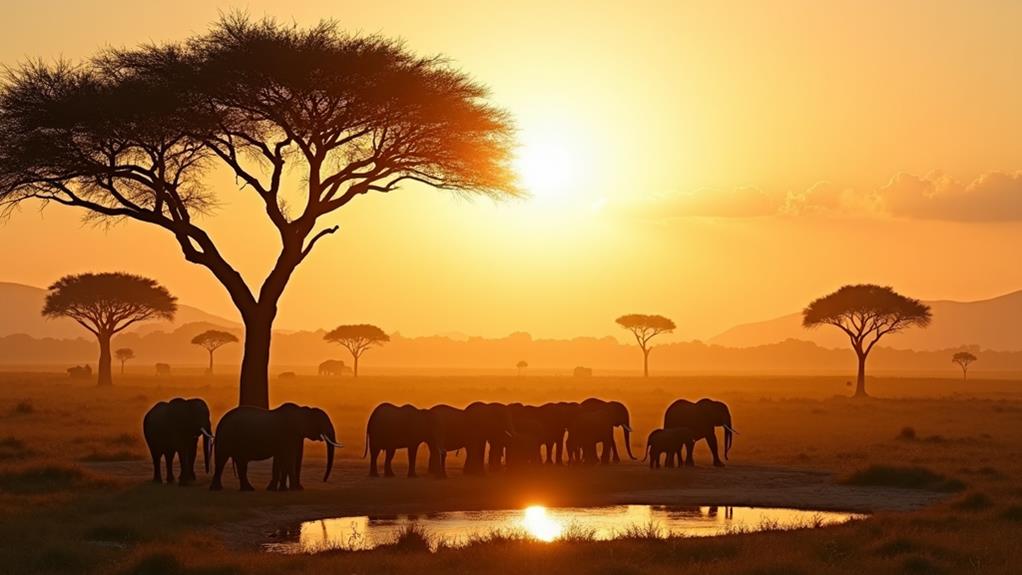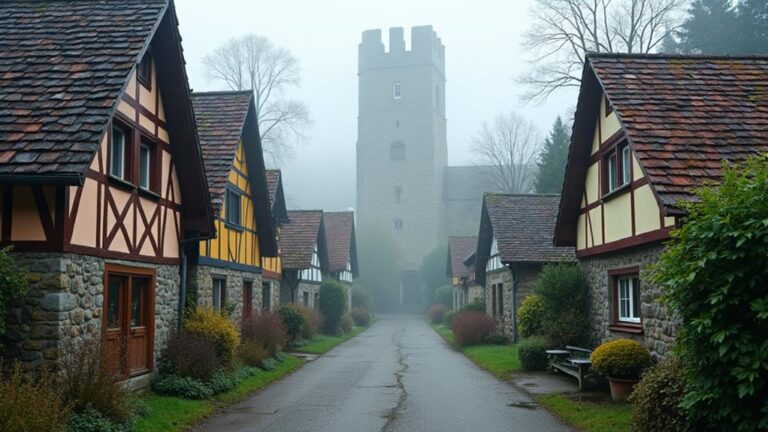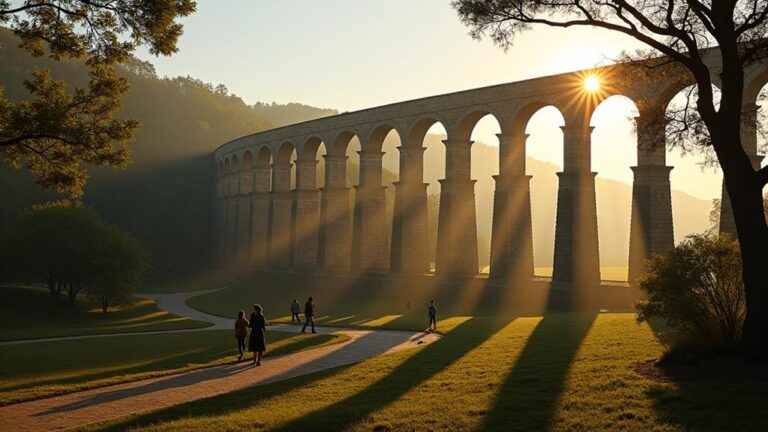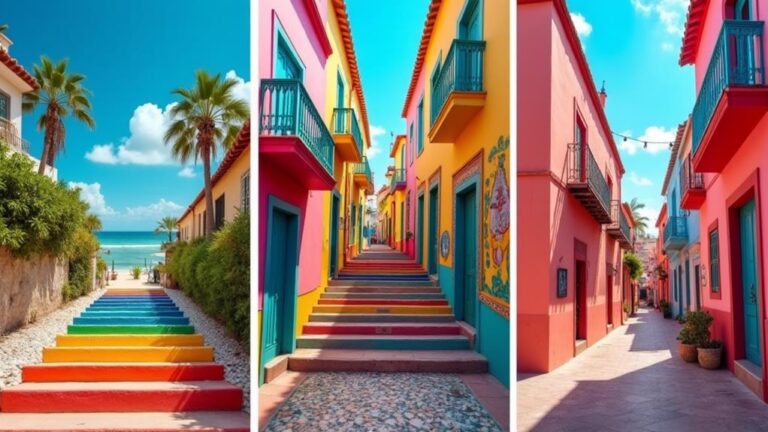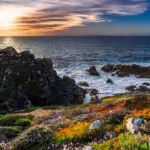As you plan your African safari in Botswana, you're likely considering the best time to visit. The country's diverse climate and unique wildlife patterns make timing crucial for an unforgettable experience. You'll want to weigh the benefits of the dry season, with its exceptional game viewing, against the green season's lush landscapes and abundant water sources. But before you make a decision, it's essential to understand the nuances of Botswana's climate and the distinct advantages of each season. What will be the deciding factor for your safari adventure – and how will you make the most of your time in Botswana?
Contents
Key Takeaways
- The dry season (May to October) offers an exceptional safari experience with better visibility and wildlife congregating around water sources.
- The green season (November to March) provides a unique wildlife viewing experience with lush landscapes and abundant water sources.
- Shoulder season (April to May and September to November) benefits include lower tourist numbers and better value deals on safari packages.
- The best time for a safari in Botswana depends on personal preference, with the dry season ideal for spotting large herds and the green season for abundant birdlife.
- Traveling during the shoulder season can result in up to 30% savings on safari expenses and a more immersive experience with fewer tourists.
Understanding Botswana's Climate
Immersed in the heart of Africa, Botswana's climate is characterized by two distinct seasons, with temperatures fluctuating significantly between them.
As you plan your African safari, it's essential to understand these seasons, which are influenced by the country's geographical location and climate zones. Botswana can be divided into two primary climate zones: the arid south and the semi-arid north.
The arid south experiences low humidity and limited rainfall, while the semi-arid north receives more rainfall, resulting in lush vegetation.
Weather patterns in Botswana are also shaped by its location in the tropics, with the Intertropical Convergence Zone (ITCZ) playing a significant role.
The ITCZ brings warm, moist air from the equator, which leads to increased rainfall and humidity during the wet season.
In contrast, the dry season is characterized by cool, dry air from the south.
Understanding these climate zones and weather patterns will help you prepare for your safari adventure.
By knowing what to expect, you can pack accordingly, plan your itinerary, and make the most of your time in Botswana's breathtaking wilderness.
Familiarizing yourself with the climate will ensure a more enjoyable and rewarding safari experience.
Dry Season Safari Experience
As you prepare for your African safari in Botswana, it's time to consider the best time to visit.
The dry season, which typically runs from May to October, offers an exceptional safari experience.
This period is ideal for wildlife viewing, as the dry conditions concentrate animals around water sources, making them easier to spot.
During the dry season, you can expect:
- Thicker congregations of wildlife at waterholes and rivers, increasing your chances of spotting the Big Five (lion, leopard, rhinoceros, elephant, and Cape buffalo)
- Better visibility due to the sparse foliage, allowing for more unobstructed views of the animals
- Warmer days and cooler nights, creating a comfortable climate for game drives and outdoor activities
- Fewer mosquitoes and other biting insects, reducing the risk of diseases like malaria
The dry season is perfect for safari planning in Botswana, as the wildlife concentration around water sources makes for exciting and frequent sightings.
With the right guidance, you'll be able to make the most of this incredible experience and create lifelong memories.
Green Season Wildlife Viewing
Your African safari in Botswana's green season, which spans from November to March, offers a unique and thrilling wildlife viewing experience. The lush, green landscapes and abundant water sources attract a diverse range of wildlife, making it an ideal time for spotting animals. As you venture into the floodplain habitats, you'll notice an increase in predator presence, including lions, leopards, and cheetahs, as they take advantage of the abundant prey.
| Wildlife Viewing Opportunities | Green Season Highlights |
|---|---|
| Increased predator presence | Lions, leopards, and cheetahs are more active |
| Abundant birdlife | Over 400 species can be spotted during green season |
| Newborn animals | Witness the birth of impalas, wildebeests, and zebras |
| Lush landscapes | Green savannas and woodlands offer a unique backdrop |
During the green season, the floodplains come alive with the sounds of birds chirping and animals grazing. The lush vegetation provides ample cover for predators, making it an exciting time for wildlife enthusiasts. With the right guide, you'll be able to track and spot a variety of animals, taking in the sights and sounds of Botswana's vibrant ecosystems.
Best Time for Migration
Best Time for Migration
During the dry season, which typically runs from May to October, the migration patterns of Botswana's wildlife become more predictable, allowing you to plan your safari with increased precision.
This is an ideal time to witness the Great Migration, where thousands of wildebeests, zebras, and antelopes migrate in search of better grazing and water.
As the dry season progresses, you'll notice that the migration patterns become more defined.
Large herds of wildebeests and zebras migrating across the Makgadikgadi Pans and the Nxai Pan
Antelopes, such as impalas and kudus, migrating to areas with lush vegetation
Predators, like lions and leopards, following the herds in search of prey
Vultures and eagles soaring above, waiting to scavenge for carrion
The dry season's predictable migration patterns make it an exciting time for a safari in Botswana.
With careful planning, you can position yourself to witness the incredible spectacle of the Great Migration, where the beauty of the African wilderness is on full display.
Avoiding the Rainy Season
As you plan your African safari in Botswana, it's crucial to understand the country's rainfall patterns to avoid the challenges that come with the wet season.
Botswana's rainy season typically runs from November to March, bringing heavy downpours that can make traveling and wildlife spotting difficult.
Rainfall Patterns Explained
When planning an African safari in Botswana, understanding the country's rainfall patterns is crucial to avoid the rainy season.
Botswana's climate is characterized by distinct wet and dry seasons, which significantly impact the country's ecosystem and wildlife.
As you prepare for your safari adventure, it's essential to grasp the rainfall patterns to ensure a safe and enjoyable experience.
- Botswana's rainy season typically occurs from November to March, with the majority of the rain falling in the central and northern regions.
- The Okavango Delta, a renowned floodplain, is particularly affected by the rainfall patterns, with the delta's water levels fluctuating significantly throughout the year.
- Desertification risks are a concern in the southern regions, where the rainfall is scarce, and the landscape is more arid.
- Understanding floodplain dynamics is vital, as it can help you navigate the country's waterways and appreciate the unique adaptations of the local wildlife.
Wet Season Challenges
Planning an African safari in Botswana during the rainy season can be a recipe for disaster, with flooded roads, overgrown vegetation, and inaccessible terrain making it difficult to navigate the country's stunning landscapes. As you consider the best time for your safari, it's essential to weigh the challenges that come with the wet season.
| Wet Season Challenges | Impact on Your Safari |
|---|---|
| Muddy roads | Difficult to traverse, increasing the risk of getting stuck or lost |
| Flooded rivers | Could require detours or alternative routes, adding time to your journey |
| Overgrown vegetation | Reduced visibility, making it harder to spot wildlife |
| Vehicle limitations | 4×4 vehicles may struggle to navigate muddy terrain, and some roads may be impassable |
The wet season can severely limit your ability to explore Botswana's beautiful landscapes. With muddy roads and flooded rivers, it's easy to get stuck or lost, and the risk of accidents increases. Overgrown vegetation reduces visibility, making it harder to spot the incredible wildlife that Botswana is famous for. Considering these challenges, it's crucial to plan your safari during a more favorable time of year.
Dry Season Relief
Most travelers will attest that a dry season safari in Botswana is a far more enjoyable experience than braving the challenges of the wet season.
The dry season, which typically runs from May to October, offers ideal viewing conditions, as animals congregate around remaining water sources.
You'll have a better chance of spotting wildlife, from elephants to lions, as they gather at rivers, waterholes, and pans.
Some dry season myths claim that the landscape becomes dull and barren.
However, this couldn't be further from the truth.
The dry season brings its own unique beauty, with desert adaptations on full display.
- The Kalahari Desert's sandy dunes take on a surreal, orange hue in the dry season.
- Trees and shrubs transform into sculptures, their branches etched against the sky like delicate pen and ink drawings.
- Waterholes become hubs of activity, as animals compete for this precious resource.
- The dry season's clear skies offer breathtaking sunsets, with the stars shining brightly at night.
Shoulder Season Safari Benefits
If you're looking for a more intimate African safari experience in Botswana, consider visiting during the shoulder season.
You'll encounter lower tourist numbers, making it easier to take in the sights and sounds of the wilderness without the crowds.
This time of year also brings better value deals on accommodations and tour packages, making your safari adventure more affordable.
Lower Tourist Numbers
By traveling during the shoulder season, you find yourself in a more serene and exclusive environment, with fewer tourists vying for a glimpse of Botswana's incredible wildlife.
This time of year offers a unique advantage for solo travelers seeking an immersive experience, as well as those looking to support local operators.
More flexibility and spontaneity in your safari itinerary, allowing you to respond to unexpected wildlife sightings or changes in the weather.
- A greater sense of connection to the land and its inhabitants, as you explore the wilderness with fewer distractions.
- More opportunities to engage with local guides and operators, learning about their culture and traditions.
- A more authentic and peaceful experience, with fewer vehicles and people competing for space and attention.
With fewer tourists around, you'll have a more intimate and immersive experience, allowing you to connect with the natural beauty of Botswana on a deeper level.
Whether you're a seasoned safari-goer or just starting to plan your trip, the shoulder season offers a unique and unforgettable experience.
Better Value Deals
Traveling during Botswana's shoulder season often translates to better value deals, as many safari operators and lodges offer discounts to attract visitors during this time.
You can enjoy budget-friendly packages that include accommodations, meals, and exciting safari experiences without breaking the bank. By traveling during the shoulder season, you can take advantage of discounted rates on luxurious lodges, campsites, and tour packages.
Shoulder season deals can save you up to 30% or more on your safari expenses, allowing you to allocate your budget to other exciting activities or upgrade your accommodations.
Many safari operators also offer special packages and promotions during this time, which can include extras like guided hikes, birdwatching excursions, or visits to local communities. With fewer tourists around, you'll have a more intimate and authentic safari experience, and the discounted rates will only add to the value of your trip.
Conclusion
You've decided on an African safari in Botswana, but the timing's got you wondering. You might think, "Won't the rainy season ruin everything?" Not necessarily – it brings new life to the landscape, making the scenery more vibrant than ever. Either way, with a dry season offering prime game viewing and a green season full of lush landscapes, the best time for your safari is the one that matches your unique adventure style.

